25 Brain Games for Dogs for 2025
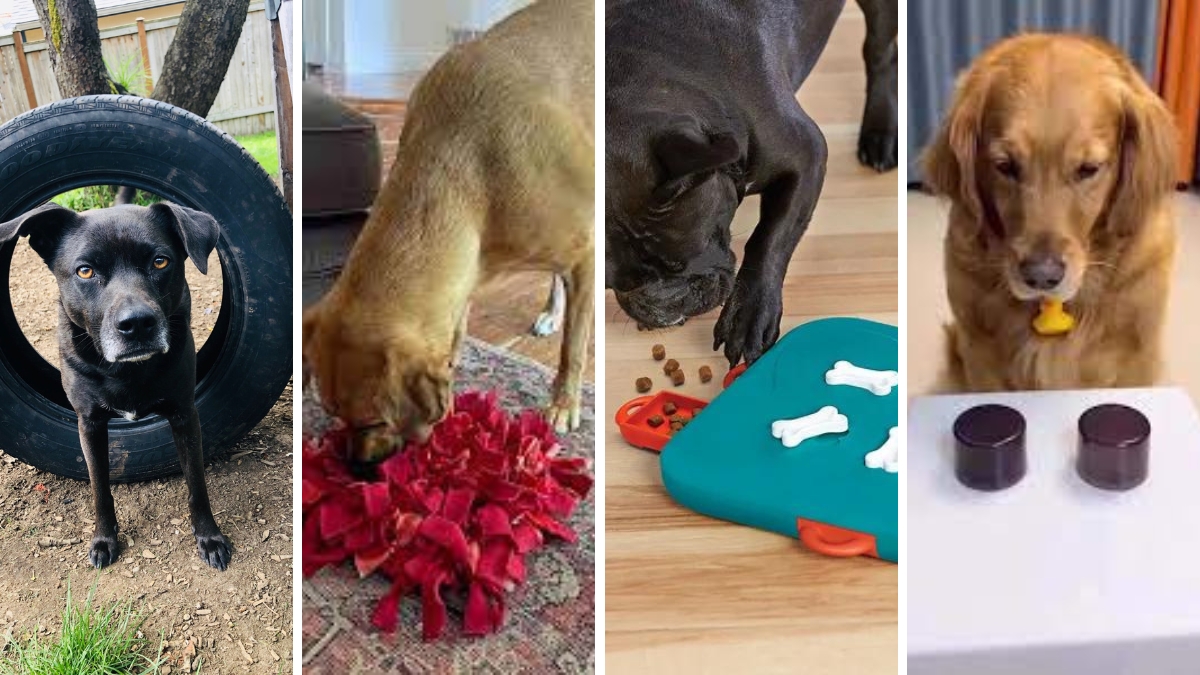
Brain games for dogs provide the perfect way to engage your pup and keep them entertained.
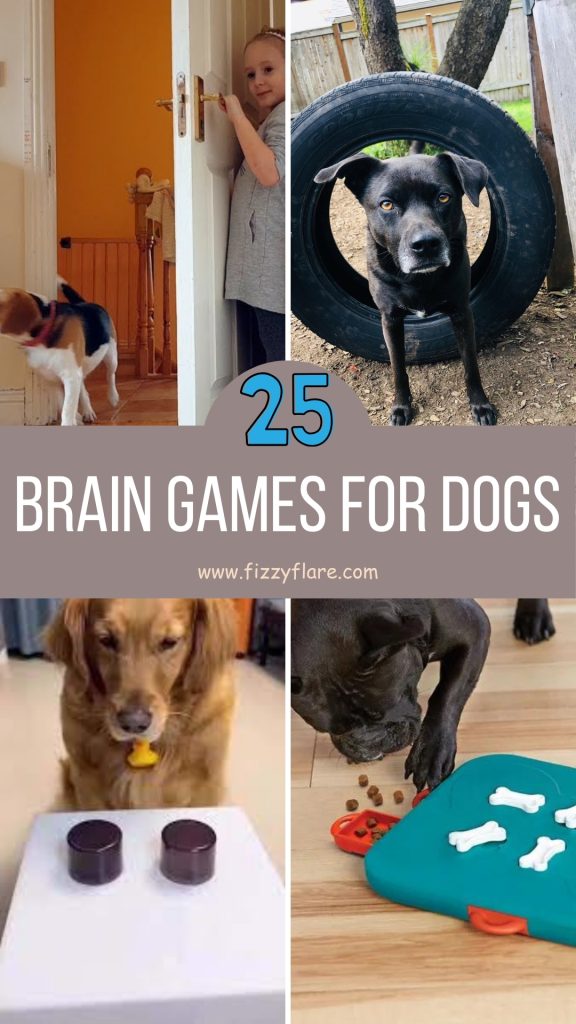
These activities challenge their problem-solving skills, improve their focus, and help prevent boredom.
In this article, I’ll share 25 exciting brain games that will provide hours of entertainment and mental enrichment for your dog.
Let’s begin!
Contents
- 1 25 Brain Games for Dogs
- 1.1 1. Hide and Seek
- 1.2 2. The Shell Game
- 1.3 3. Puzzle Toys
- 1.4 4. Name Game
- 1.5 5. Towel Roll
- 1.6 6. Which Hand?
- 1.7 7. Hot and Cold Game
- 1.8 8. Teach New Tricks
- 1.9 9. Dog Parkour
- 1.10 10. Fetch with a Twist
- 1.11 11. Snuffle Mat
- 1.12 12. Interactive Feeding
- 1.13 13. Toy Pick-Up
- 1.14 14. Switch Up Walks
- 1.15 15. Obstacle Course
- 1.16 16. DIY Agility Course
- 1.17 17. Learn to Make Eye Contact
- 1.18 18. Interactive Tug-of-War
- 1.19 19. Treat Under Tennis Balls
- 1.20 20. Scent Work
- 1.21 21. Follow the Leader
- 1.22 22. Hand Signals
- 1.23 23. Teach Your Dog to Read
- 1.24 24. DIY Treat Dispenser
- 1.25 25. Treasure Hunt
25 Brain Games for Dogs
1. Hide and Seek
Hide and Seek is a fun and engaging game that uses your dog’s natural sniffing abilities. To play, hide treats or favorite toys around your house while your dog is out of the room.
Once hidden, call your dog and encourage them to find the hidden items. This game stimulates their problem-solving skills and provides mental enrichment.
Many pet owners find this game particularly useful for tiring out high-energy dogs without needing a large space.
2. The Shell Game
The Shell Game sharpens your dog’s attention and memory. You should place a treat under one of three cups and shuffle them while your dog watches.
After shuffling, let your dog use their nose or paw to choose the cup hiding the treat. This game helps improve your dog’s focus and cognitive skills.
Pet owners often find this game easy to set up and highly effective in engaging their dogs, making it a popular choice for mental stimulation.
3. Puzzle Toys
Puzzle toys are interactive games that challenge your dog to figure out how to retrieve treats hidden within.
Popular puzzle toys, like the Outward Hound Brick Puzzle, require dogs to slide, flip, or lift compartments to access the treats.
Many dog owners appreciate puzzle toys for their ability to keep dogs entertained and mentally engaged for extended periods.
4. Name Game
The Name Game involves teaching your dog the names of different toys and having them fetch specific ones on command.
You should start by naming one toy and repeatedly using that name during play until your dog associates the name with the toy.
Gradually introduce more toys and names. This game enhances your dog’s memory and cognitive skills, and it’s also a great way to impress friends and family.
5. Towel Roll
The Towel Roll game promotes independent play. Spread treats on an old towel, then roll it up, ensuring treats are hidden within the layers.
Give the towel to your dog and let them figure out how to unroll it to access the treats. This game encourages problem-solving and provides mental stimulation.
Many dog owners find this game to be an excellent way to keep their pets entertained and mentally engaged without requiring expensive equipment.
6. Which Hand?
Which Hand? is a straightforward game that enhances your dog’s sense of smell and decision-making skills.
Hide a treat in one of your hands, then present both closed fists to your dog and ask them to choose the correct hand.
When your dog indicates the correct hand, reward them with the treat. This game helps sharpen their attention and cognitive abilities.
7. Hot and Cold Game
Hide a treat when your dog isn’t looking, then use a calm tone to indicate they are getting “colder” as they move away and an excited tone for “hotter” as they get closer. This game improves your dog’s listening skills and problem-solving abilities.
Many pet owners appreciate this game for its interactive nature and the strong bond it helps build between them and their dogs.
8. Teach New Tricks
Regularly teaching your dog new tricks, such as rolling over or playing dead, is an excellent way to keep their mind sharp.
Training sessions should be positive and reward-based to keep your dog motivated and engaged.
Learning new tricks stimulates your dog’s brain, enhances their memory, and boosts their confidence.
9. Dog Parkour
Dog Parkour combines physical and mental exercise by incorporating obstacles into your daily walks.
Teach your dog basic commands like jumping over logs, weaving through poles, and crawling under benches.
This game requires focus and coordination, keeping your dog mentally stimulated while getting a good workout.
10. Fetch with a Twist
Fetch with a Twist adds a mental challenge to the traditional game of fetch. Before throwing the ball, ask your dog to perform a series of commands or tricks.
This could include sitting, staying, or shaking paws. The reward for completing the commands is fetching the ball.
This game improves your dog’s impulse control and cognitive skills while providing physical exercise.
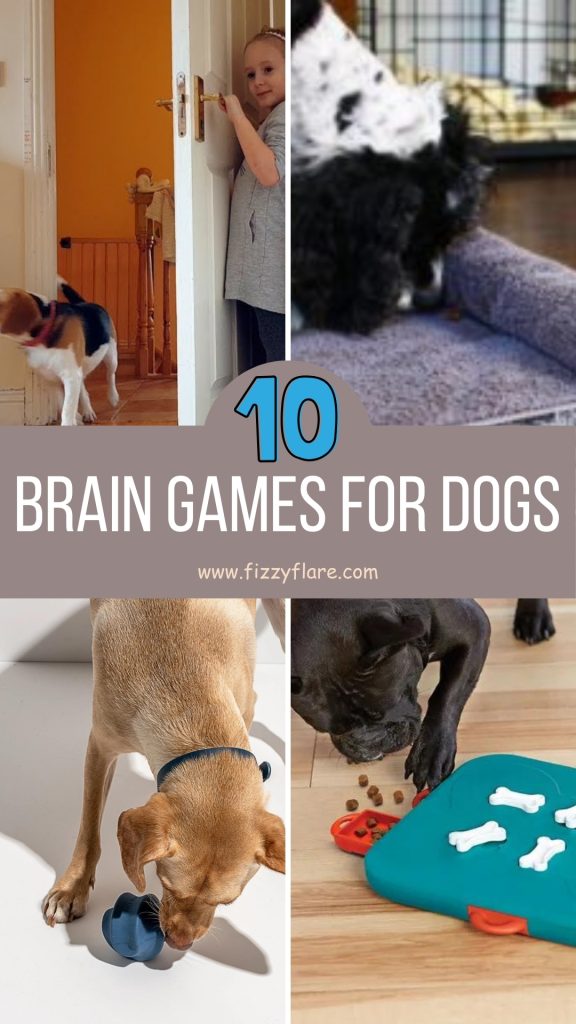
11. Snuffle Mat
A snuffle mat is a fabric mat designed with multiple layers of fabric strips where you can hide treats or kibble.
It encourages your dog to use their nose to search for the hidden food, stimulating their natural foraging instincts.
The mat works by scattering treats within the fabric folds, and your dog has to sniff and nudge through the layers to find their reward.
This game provides mental stimulation and can be particularly beneficial for high-energy dogs or those who eat too quickly.
12. Interactive Feeding
Interactive feeding involves using feeders or treat-dispensing toys to make mealtime a mental exercise for your dog.
These devices require your dog to work for their food by solving puzzles or manipulating the toy to release treats.
This provides mental stimulation and slows down eating, which can be beneficial for digestion and preventing obesity.
Popular options include the Kong Wobbler and puzzle feeders with sliding compartments.
13. Toy Pick-Up
This game encourages obedience and problem-solving as your dog learns to follow your commands and organize their space.
Start by showing your dog how to pick up a toy and drop it in a box or basket, rewarding them with treats and praise for each successful attempt.
Gradually, your dog will understand the routine and start cleaning up their toys on command.
14. Switch Up Walks
Changing your walking routes regularly exposes your dog to new environments, sights, and smells, keeping their brain engaged and reducing monotony.
This game is simple: instead of taking the same path every day, explore different routes, parks, or neighborhoods.
The new stimuli will challenge your dog to stay alert and adapt to changing surroundings, which can enhance their sensory processing and overall mental health.
15. Obstacle Course
Setting up a mini obstacle course in your backyard using household items helps to enhance your dog’s focus and coordination.
You can use items like cones, chairs, and tunnels to create a series of challenges that your dog must navigate.
Guide your dog through the course using commands and rewards, gradually increasing the complexity as they become more confident.
16. DIY Agility Course
Creating a DIY agility course using cones, tunnels, and jumps provides comprehensive physical and mental exercise for your dog.
Start with basic commands like “jump” and “weave,” and progressively introduce more complex tasks as your dog becomes more adept.
This game improves your dog’s agility, coordination, and obedience, offering a structured and stimulating activity.
17. Learn to Make Eye Contact
Teaching your dog to make eye contact on command can significantly improve focus and obedience.
Hold a treat near your eyes and use a command like “look at me.” Reward your dog when they make eye contact, gradually phasing out the treat as they learn the behavior.
This game enhances your dog’s ability to concentrate and follow commands, which can be helpful in various training scenarios.
18. Interactive Tug-of-War
You should establish rules like dropping the toy on command or sitting before the game starts. This encourages your dog to follow instructions and practice self-control.
Tug-of-war is physically stimulating and strengthens your dog’s muscles, but incorporating rules makes it mentally challenging as well.
However, you should maintain a positive and controlled environment during the game to ensure it remains a beneficial activity.
19. Treat Under Tennis Balls
The treat under tennis balls is a simple yet effective way to engage your dog’s problem-solving skills.
Place treats in a muffin tin and cover each with a tennis ball. Your dog must figure out how to remove the balls to get the treats.
This game enhances their cognitive abilities and keeps them entertained. It’s particularly well-suited for dogs that enjoy using their paws and noses to explore.
20. Scent Work
Scent work involves hiding different scented items around the house and training your dog to find specific scents.
Start with a single scent, such as a piece of cloth with your scent, and gradually introduce more complex scents like herbs or essential oils.
This game taps into your dog’s natural sniffing abilities and enhances their sensory processing. Scent work is highly rewarding and can help alleviate boredom and anxiety.
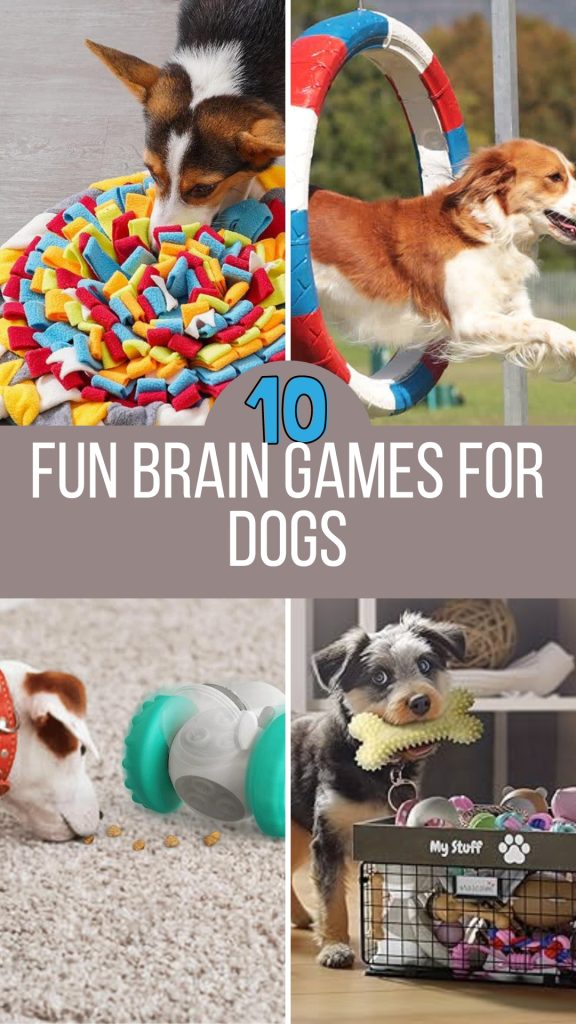
21. Follow the Leader
In this game, you walk around the house or yard, performing various actions like sitting, standing, turning, and stopping abruptly.
Your dog needs to pay close attention and follow your movements. This game is excellent for reinforcing basic commands and ensuring your dog stays attentive to your cues.
Start with simple actions and gradually increase the complexity as your dog gets better at following you. Praise and reward your dog when they mimic your actions correctly.
22. Hand Signals
You should begin by pairing a hand signal with a verbal command your dog already knows, such as “sit” or “stay.”
Gradually phase out the verbal cue, using only the hand signal. Consistency and repetition are key.
Use clear, distinct hand gestures and reward your dog with treats and praise for correctly responding to the signals.
Over time, your dog will learn to associate the hand movements with the desired actions.
23. Teach Your Dog to Read
You should start by showing your dog a flashcard while simultaneously giving the verbal command and a hand signal.
Gradually phase out the verbal command, leaving only the flashcard and hand signal. Reward your dog for correctly responding to the written command.
This game challenges your dog’s cognitive skills and memory, making it an excellent mental exercise.
24. DIY Treat Dispenser
Creating a DIY treat dispenser is a fantastic way to engage your dog’s problem-solving skills. To make one, use a plastic bottle and cut small holes in it.
Fill the bottle with your dog’s favorite treats or kibble, and then show your dog how to roll the bottle to get the treats out.
This game encourages your dog to think and work for their reward, providing both mental stimulation and physical activity.
Ensure the holes are large enough for treats to fall out but not too easily, so your dog remains challenged.
25. Treasure Hunt
Bury toys or treats in a sandbox or a designated digging area in your yard. Encourage your dog to dig and find the hidden treasures.
This game satisfies their instinctual need to dig and search, offering a fun and rewarding experience.
You should start with shallow buries and gradually increase the difficulty as your dog gets better at the game.
Always supervise to ensure they are digging in the designated area and not causing damage elsewhere.
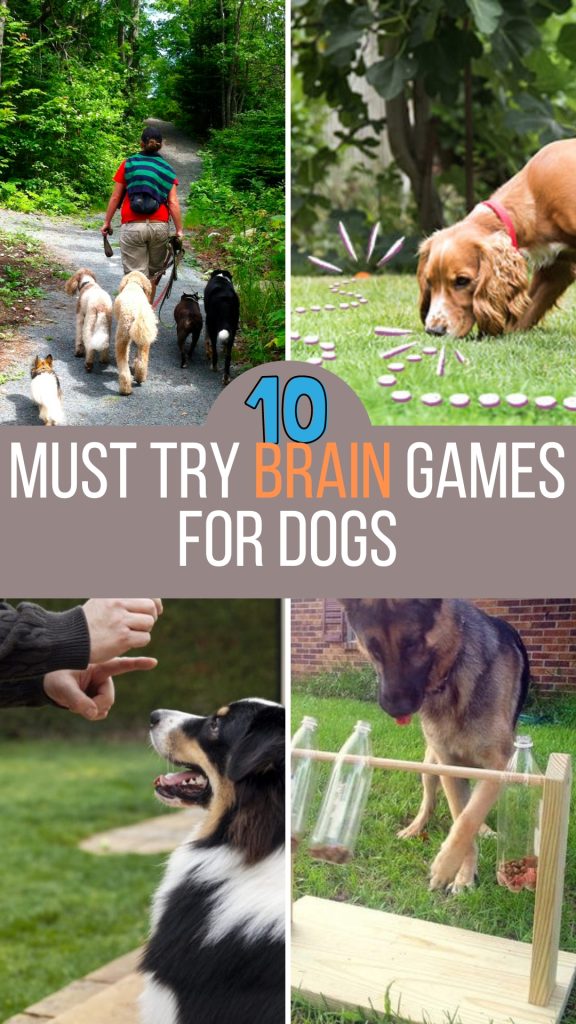

Fasial is the founder of the Fizzy Flare. He has been a passionate blogger since 2021. He ran three different websites in the past few years. Now he is focusing on Fizzy Flare to build an audience and help them organize their life.
